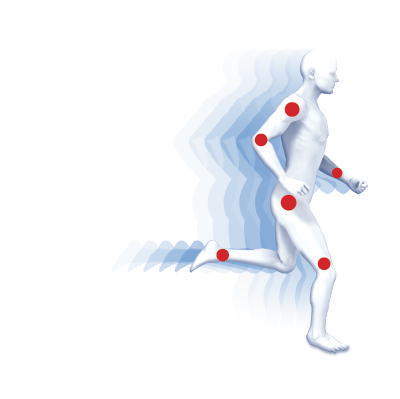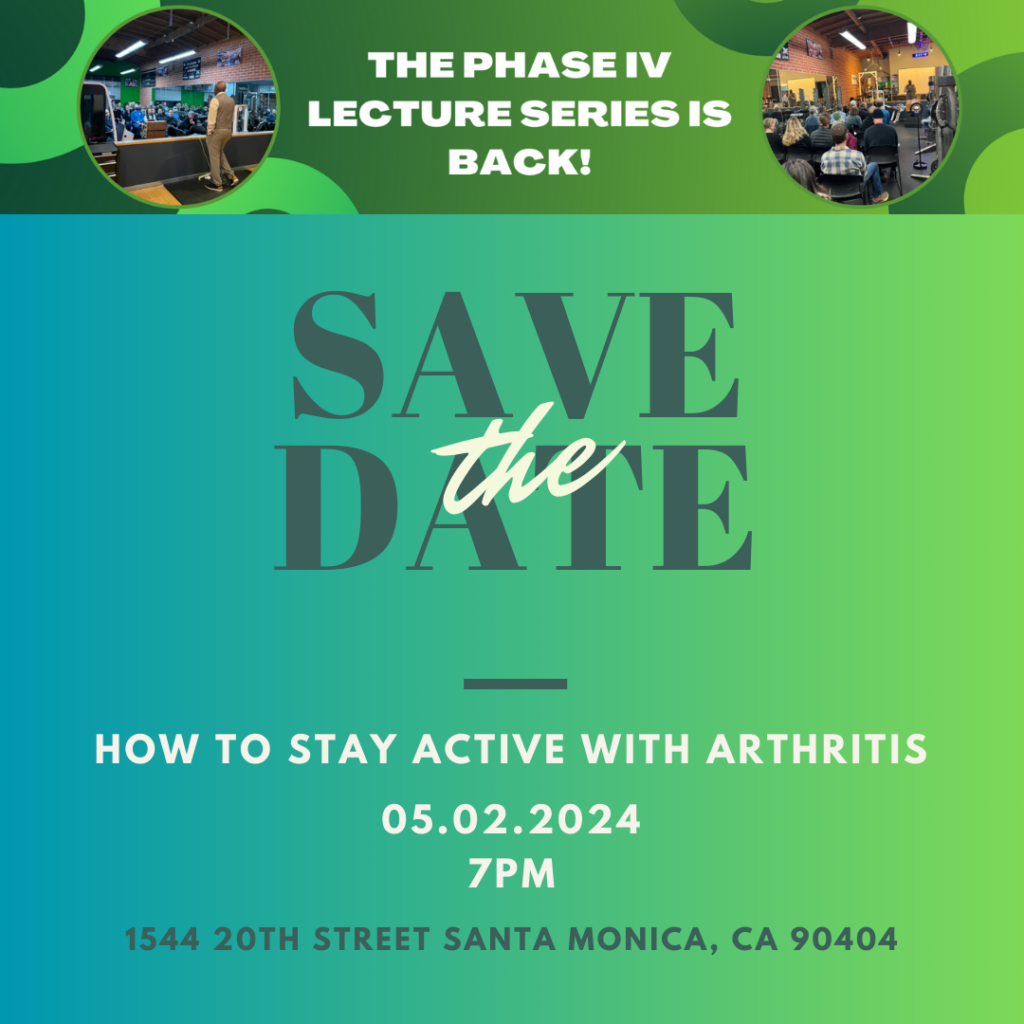
Arthritis: After 6 Decades of Exercise
Healthier Hearts but Worn Out Joints
At Forster Physical Therapy in Santa Monica we are now treating the third generation of local families. The first generation of these families are now in their 60s and they are the first in American history to maintain a life long commitment to fitness en mass. It’s been seven decades since the birth of the modern day fitness boom. The connection between exercise and health can be traced back to the JFK Presidential Fitness test so many of us grew up with in the 60s. Then is was tennis boom in the 1970s that got people moving more, and next came the running craze and then the triathlon era. Finally, outdoor adventure racing opened us to the the world’s greatest gym -the great outdoors.
For the first time we have 25 year longitudinal studies that show all of the health benefits and disease protection afforded to those who were habitually active over the decades with the only downside being their stiff and achy joints that have brunt the forces of the decades of multiple reps, extra miles and copious amounts of sweat.
The studies show that the first fitness generation of the modern fitness movement are thinner and healthier than previous generations and their sedentary counterparts. They have less coronary artery disease, heart attacks and strokes and they are even protected against 13 types of cancer.
However, due to a life long commitment to exercise and an active lifestyle their joints show the wear and tear associated with habitual exercise. The diagnosis of arthritis is more prevalent than ever with 3.25 million Americans, or 1 in 5 Americans, now diagnosed with osteoarthritis.
Osteoarthritis
There are varied types of arthritis associated with inflammatory diseases, but the garden variety that causes painful, stiff and dysfunctional joints is called osteoarthritis and is the result of injury and years of overuse.
Damage to the Teflon like articular cartilage (think of the white cap at the end of chicken bones) results from either forceful impacts to the joint as a result of sports injuries or a fall, or repetitive smaller impacts to the joint from years of activity. This breakdown is frequently accelerated with faulty joint mechanics caused by poor alignment of the joint caused by weak or tight muscles. The result is painful, stiff and swollen joints.
However, the cartilage itself has no nerve endings, so why do arthritic joints involve pain and loss of motion?
The cartilage breakdown causes inflammation in the soft tissue lining of the joint known as the joint capsule. This results in muscle spasm and irritation of the tissues surrounding the joint and creates the pain associated with arthritic joints. Movement becomes painful and over time the muscles shorten and tighten to restrict movement until one cannot fully straighten out the joint. This is called a joint contracture.
Joint contractures at the knee, for instance, results in the limp associated with arthritic joints. We have come to learn that calming these focal points of pain with physical therapy techniques and regaining the fullest degree of joint motion and reversing the joint contracture are the essential steps in regaining function and reducing pain in arthritic joints.
Our Physical Therapists treat the pain in the tissues surrounding the joint and utilize a manual therapy technique known as joint mobilization to stretch the joint capsule and then instruct our patients in the stretching and strengthening exercises to reduce or eliminate the joint contracture. The goal is to return the fullest range of motion possible. This not only decreases pain and improves joint function fairly quickly but also helps preserve joint health and prevent the advancement of the arthritic process.
If you are willing to commit to a few daily stretches and strength exercise you can minimize, or completely eliminate pain and disability.





